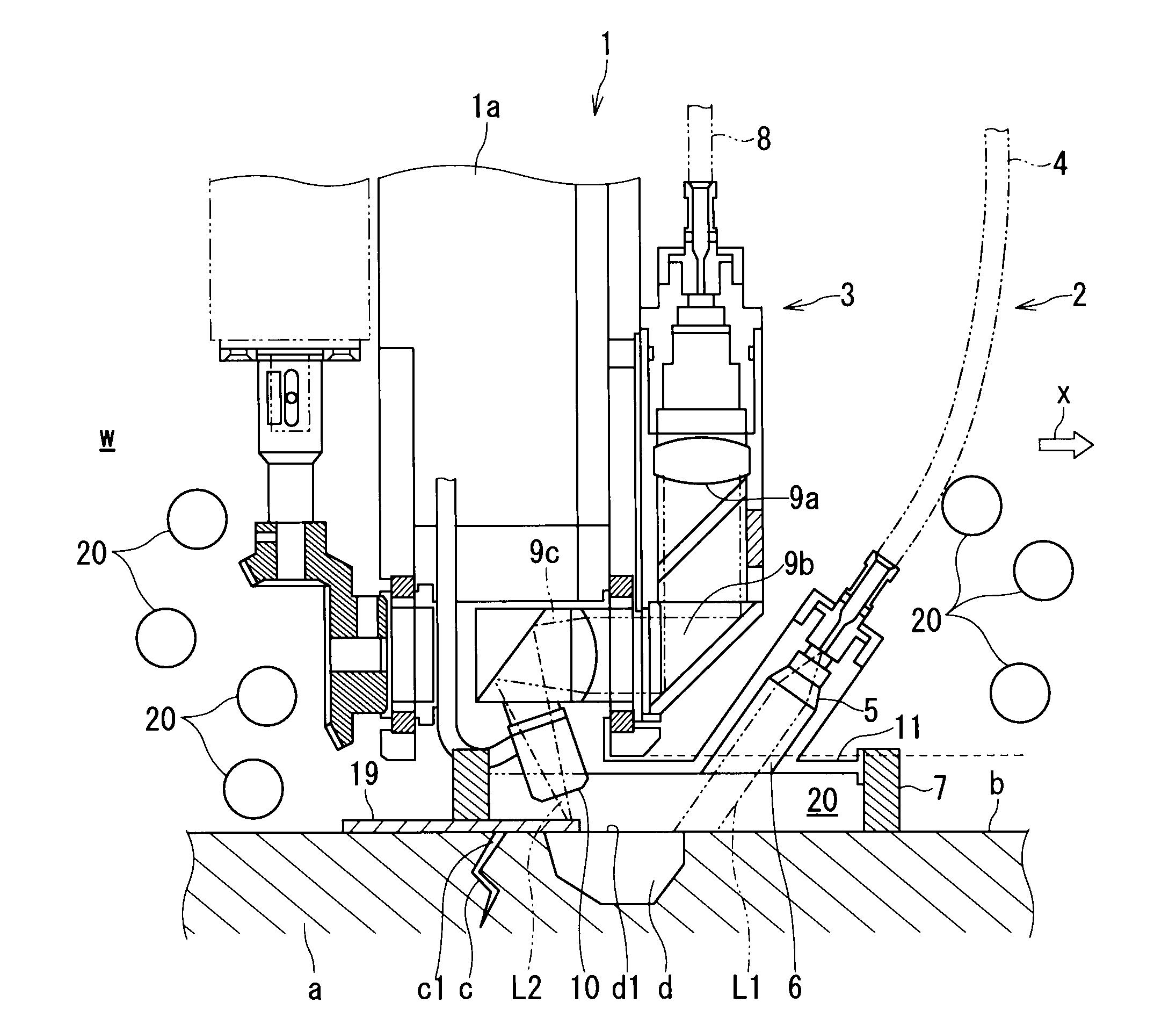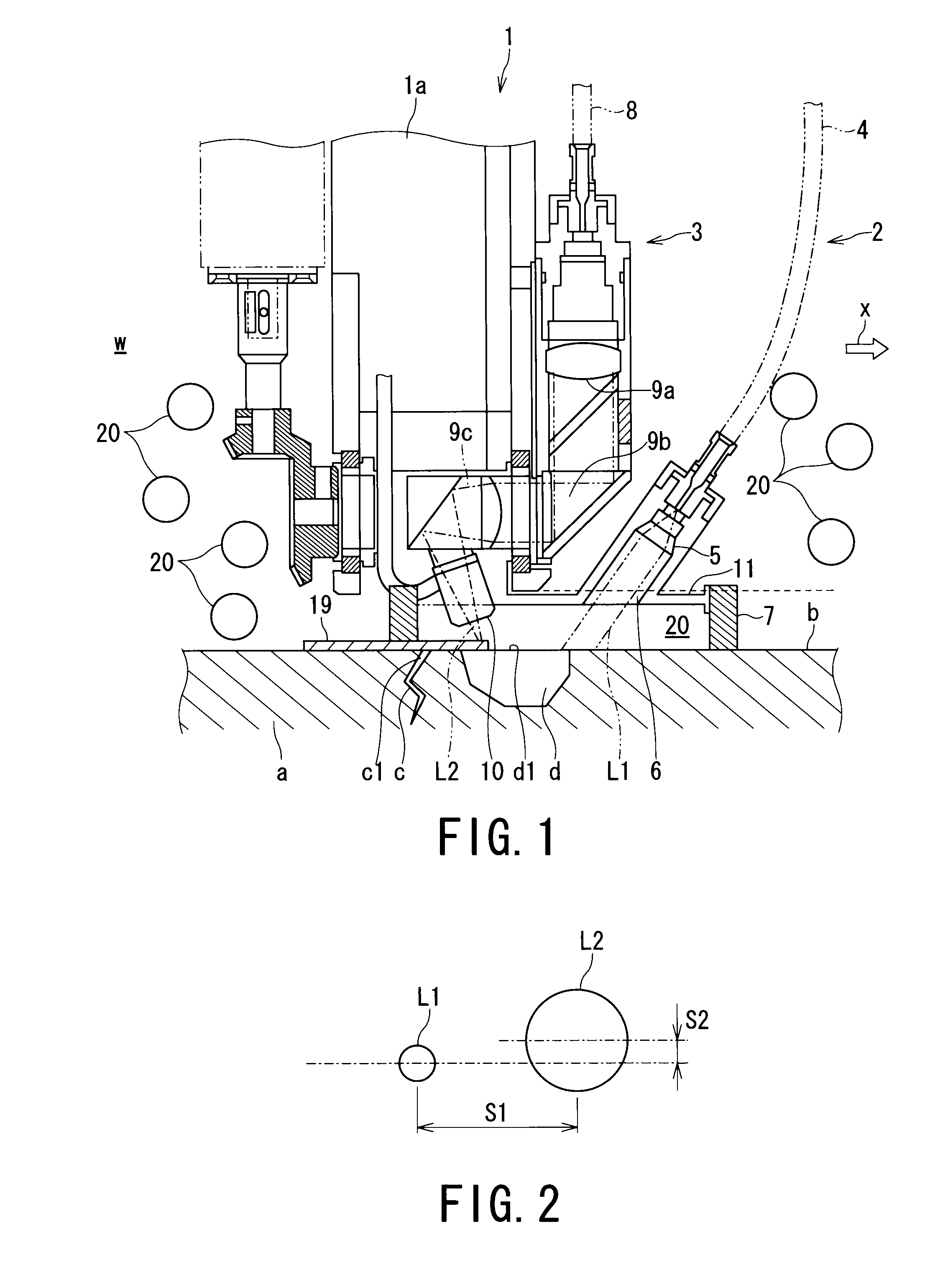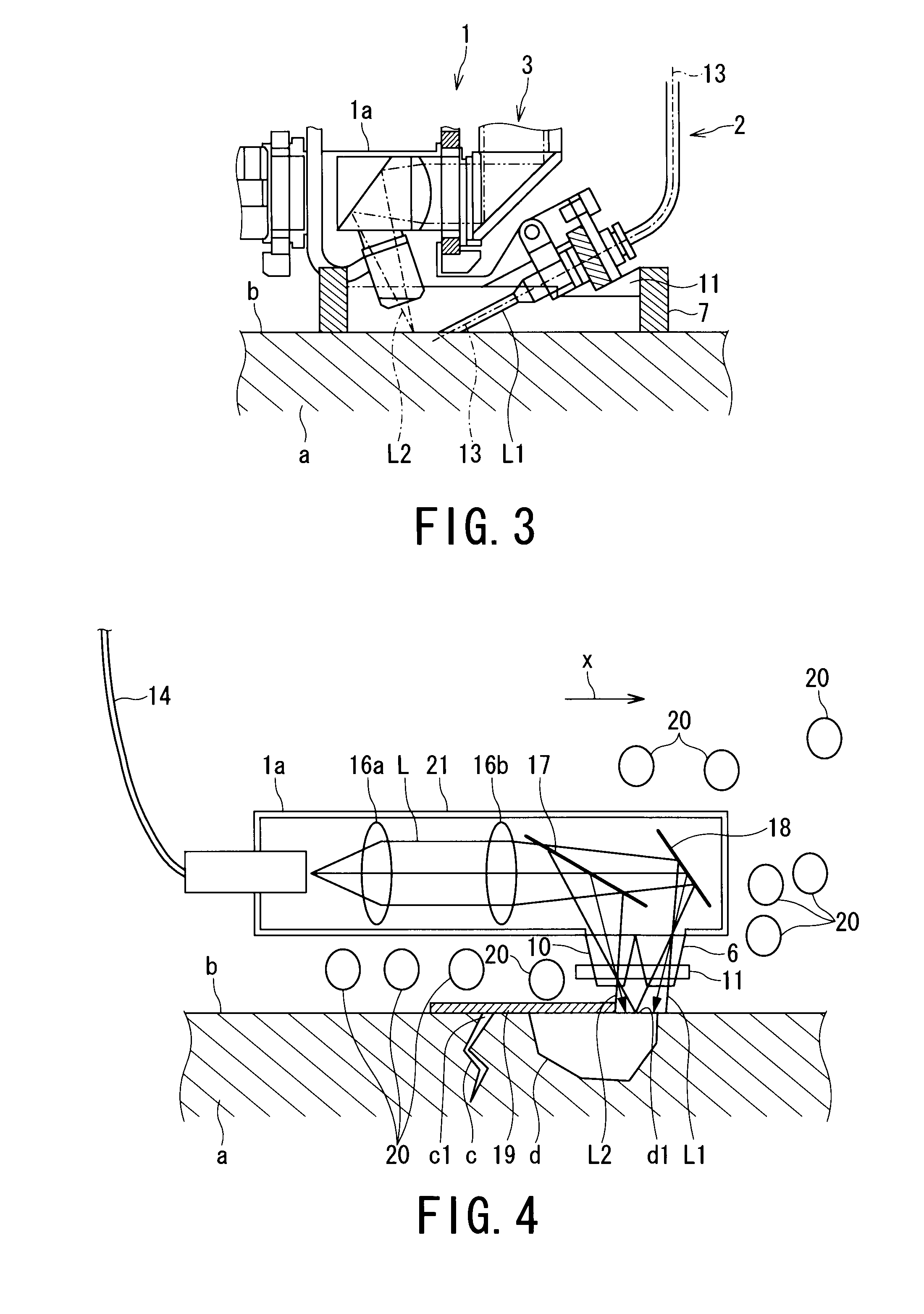Surface crack sealing method
a surface crack and sealing technology, applied in the direction of manufacturing tools, soldering devices, nuclear elements, etc., can solve the problems of pits in the sealing/welding step, the difficulty of individually or independently controlling the diameter of the preceding and subsequent laser beams,
- Summary
- Abstract
- Description
- Claims
- Application Information
AI Technical Summary
Benefits of technology
Problems solved by technology
Method used
Image
Examples
first embodiment
FIGS. 1 to 3
[0024]FIG. 1 is a view for explaining a surface crack sealing method according to a first embodiment of the present invention and shows the configuration of an essential portion of a welding apparatus. FIGS. 2 and 3 are views for explaining functions of the welding apparatus.
[0025]As shown in FIG. 1, when a reactor is inspected, for example, a welding apparatus 1 is suspended in a reactor water “w” for the purpose of sealing cracks “c” and “d” having openings c1 and d1 and produced in a surface “b” of a member “a”, which is a structural member constituting the reactor.
[0026]FIG. 1 shows a welding head 1a disposed at a lower end of the welding apparatus 1. The welding head 1a includes two sets of laser devices, first and second laser devices 2 and 3.
[0027]The first laser device 2 is a heating laser device and irradiates the regions of the member “a” where the cracks are produced with a heating laser beam L1 to heat the regions to a temperature lower than the melting point...
second embodiment
FIG. 4
[0049]In this second embodiment, a surface crack sealing method, in which a laser beam L transmitted through a single optical fiber 14 is divided by a half-silvered mirror 17 into the heating laser beam L1 and the welding laser beam L2, will be described.
[0050]In the present embodiment, only the way of applying the heating laser beam L1 and the welding laser beam L2 differs from that in the first embodiment, and accordingly, the same reference numerals are added to portions and / or members in FIG. 4 corresponding to those in FIG. 1 representing the first embodiment, and duplicated explanations are omitted herein.
[0051]As shown in FIG. 4, in the present embodiment, the half-mirror 17 and a total reflection mirror 18 are provided in a casing 21 that houses the welding head 1a, unlike the first embodiment. The half-mirror 17 and the total reflection mirror 18 are used to divide the laser beam L transmitted through the single optical fiber 14 into the heating laser beam L1 and the ...
PUM
| Property | Measurement | Unit |
|---|---|---|
| distance | aaaaa | aaaaa |
| temperature | aaaaa | aaaaa |
| melting point | aaaaa | aaaaa |
Abstract
Description
Claims
Application Information
 Login to View More
Login to View More - R&D
- Intellectual Property
- Life Sciences
- Materials
- Tech Scout
- Unparalleled Data Quality
- Higher Quality Content
- 60% Fewer Hallucinations
Browse by: Latest US Patents, China's latest patents, Technical Efficacy Thesaurus, Application Domain, Technology Topic, Popular Technical Reports.
© 2025 PatSnap. All rights reserved.Legal|Privacy policy|Modern Slavery Act Transparency Statement|Sitemap|About US| Contact US: help@patsnap.com



